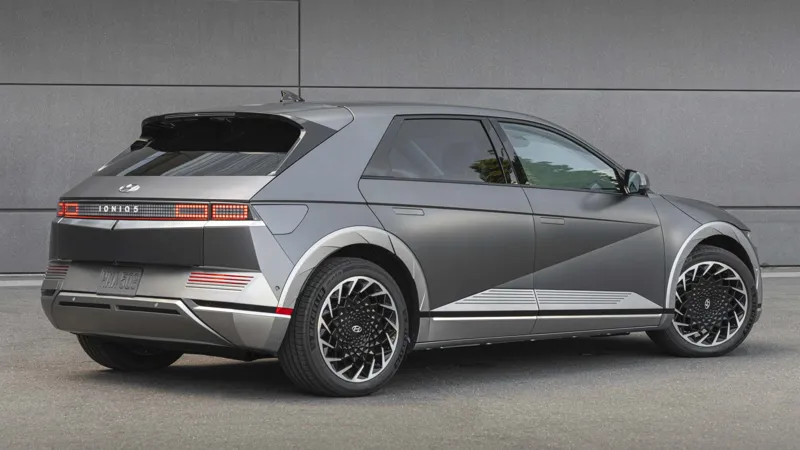
2025 Hyundai Ioniq 5: A Mixed Review on Charging Compatibility
As the electric vehicle (EV) market continues to evolve, Hyundai’s latest iteration of the Ioniq 5 has arrived with ambitious enhancements and a newfound compatibility with Tesla’s charging network. However, the 2025 model has sparked discussions as its integration of Tesla’s North American Charging Standard (NACS) port reveals some practical limitations. In this review, we delve into the driving experience of the Ioniq 5, explore its innovative features, and highlight the challenges that come with charging at Tesla Supercharger stations. Join us as we navigate the intersection of cutting-edge technology and real-world usability in Hyundai’s refreshed all-electric SUV.
| Feature | Details |
|---|---|
| Model | 2025 Hyundai Ioniq 5 |
| Charging Compatibility | Compatible with Tesla’s NACS but has limited access to Superchargers due to charging port location. |
| Charging Speed | 10% to 80% in about 20 minutes at CCS charger; 30 minutes at NACS charger. |
| Battery Options | Standard battery: 63 kWh; Extended battery: 84 kWh. |
| Driving Range | 245 to 318 miles, depending on battery and drivetrain configuration. |
| Power Output | 168 hp (base), 225 hp (extended), up to 320 hp (AWD with larger battery). |
| Trims Available | SE, SEL, XRT, and Limited trims with rear- or all-wheel drive. |
| Technology Features | Wireless Apple CarPlay and Android Auto; digital key function; over-the-air updates. |
| XRT Trim Features | 1-inch lift, off-road tires, terrain modes for Snow, Mud, and Sand. |
| Starting Price | $43,975 for base SE model; up to $59,575 for top Limited trim. |
| Competitors | Ford Mustang Mach-E, Kia EV6, with varying features and pricing. |
Understanding the Tesla Charging System
Tesla Superchargers are a popular choice for electric vehicle (EV) owners because they offer fast charging and a convenient network across the U.S. However, Hyundai’s new 2025 Ioniq 5, which includes Tesla’s North American Charging Standard (NACS) port, has shown that not all charging experiences are seamless. The Ioniq 5’s rear-side charging port can make it tricky to connect to Tesla chargers, especially since the cables may not reach properly, leading to some frustration for drivers.
While Tesla and Hyundai are working together to expand charging options, challenges still exist. For those who own a Hyundai Ioniq 5, it’s important to know that they might have a better experience using CCS (Combined Charging System) stations instead. These stations offer faster charging times and are more widely available, meaning drivers can recharge their vehicles in about 20 minutes when using the right equipment.
Frequently Asked Questions
What is the main issue with the 2025 Hyundai Ioniq 5 and Tesla Superchargers?
The 2025 Hyundai Ioniq 5 has a charging port that doesn’t reach Tesla Supercharger cables, making it difficult to charge at those stations.
How long does it take to charge the Hyundai Ioniq 5 at a CCS station?
At a CCS station, the Ioniq 5 can charge from 10% to 80% in about 20 minutes, which is faster than at a Tesla Supercharger.
What new features does the 2025 Hyundai Ioniq 5 offer?
The new Ioniq 5 includes wireless Apple CarPlay, Android Auto, and a digital key function for convenience.
Is there an off-road version of the Hyundai Ioniq 5?
Yes, the Ioniq 5 now has an XRT trim designed for light off-road use, featuring a one-inch lift and all-terrain tires.
What is the price range of the 2025 Hyundai Ioniq 5?
The 2025 Hyundai Ioniq 5 starts at $43,975 for the base model, with the off-road XRT priced at $56,875.
Can older Hyundai EV owners get a NACS adapter?
Yes, older Hyundai EV owners can receive a free NACS adapter through the MyHyundai owner portal starting in March.
What is the expected range of the 2025 Hyundai Ioniq 5?
Depending on the model, the Ioniq 5 offers a range from 245 miles to 318 miles on a full charge.
Summary
The 2025 Hyundai Ioniq 5 is a refreshed all-electric SUV that now features Tesla’s charging port. However, it has compatibility issues with Tesla Superchargers, as the charging cable often doesn’t reach the car’s port. While Hyundai offers a CCS adapter and charging credits to make it easier to charge, the Ioniq 5 is better suited for CCS stations. The vehicle boasts improvements like a larger battery, better range up to 318 miles, and new tech features like wireless Apple CarPlay. The adventurous XRT trim allows off-road fun, but the Ioniq 5 remains a strong performer on the road.